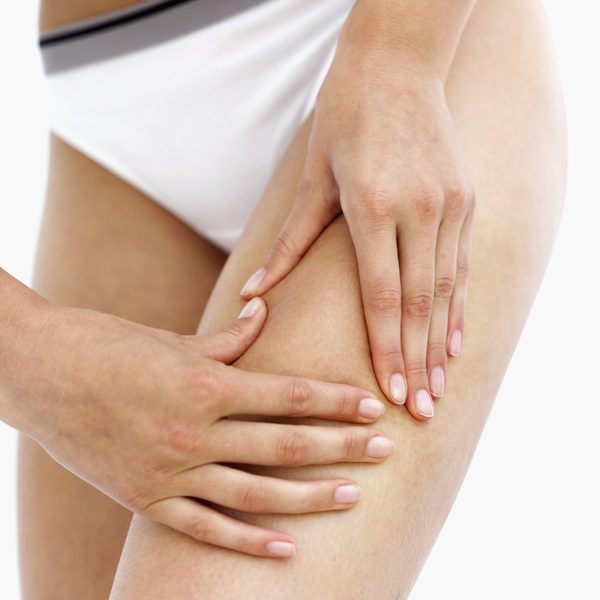A Weekly Slow, Long Anaerobic Run is a Key Building Block to Your Training Program

|
Ads we feature have been independently selected and reviewed. If you make a purchase using the links included, we may earn a commission, which helps support the site. Thank you for your support.
Many runners, especially newbies, are of the mindset that running long is a workout done solely for preparing for a half marathon, full marathon, or an ultramarathon. In actuality, there’s quite a bit more to the story. They are an important part of a properly balanced training program for runners of all stripes. It is just one aspect of the 10 habits of highly-successful runners. By the way, the same logic applies to walkers as well; just adapt the concepts as needed. Aerobics is aerobics.
Weekly long distance runs also supply key benefits for athletes that are preparing for a 5K, 10K, or any distance. It also keeps the body from plateauing for individuals intent on burning calories for a weight loss program.
In short (pun not intended), longer distance, slower workouts are just one more factor in a comprehensive workout program. Your easy and recovery runs should make up the bulk of your program in order to avoid injury. Although the term has fallen by the wayside, we used to call this LSD (Long, Slow Distance).
Round out your weekly routine by adding in some interval workouts, fartlek, tempo runs, and sporadic pick-ups to activate your fast-twitch muscle fibers for developing speed. Adding in some hill training will boost leg strength and teaches your legs to handle lactic acid build-up.
Whatever type of workout you have planned for the day it’s important to stick to your workout warm-up routine. It might not seem necessary for a slow long run but in fact, it is. And after all, there is something to be said for conforming to habit to keep you honest. The importance of rituals in our everyday lives keeps us balanced.
Long Distance Running Stimulates Physiological Adaptations
Running Times (sadly, a now-defunct magazine) coach and columnist Greg McMillan rightly pointed out that there are 3 distinct physiological adaptations that distance training provides us with.
- New capillary growth. What are capillaries? These are the smallest of blood vessels; the more you have, the more oxygen-delivery your body is efficiently capable of. The end result is that they enhance your ability to do work. Capillaries are also key during the process of dissipating heat as they direct more blood close to your skin.
- Musculoskeletal strengthening. As Arnold the Terminator would say, “I’ll pump you up!” Similar to the way lifting weights strengthens particular target muscles, when you add stress to your legs it promotes ligament, tendon, and muscle strengthening. To maintain and build bone density be sure to get enough calcium and vitamin D in your diet. As far as supplements go, a CoQ10 dietary supplement is highly encouraged for the many benefits for runners, especially us, ahem, older ones. See the graphic below.
- Enzyme changes. Running long distances encourages an increase in the number of enzymes in the legs.
- Improved mental functioning. Studies have shown that aerobic exercise such as running improves memory and brain cell functioning.

Increase Your Running Distance Slowly but Surely
The majority of wise runners do their weekly long runs when they can allocate the time for both the run and the requisite recovery; usually, this means the weekend. I’m comfortable with my long run on Saturday and my recovery run on Sunday. Just this morning I did my long run followed by a mile cool-down walk. I never used to do the cool-down but it really helps to give your heart rate a wee bit of time to come down. It really does take this long when the temperature is in the mid-to-upper 90s. Just look at a marathon training schedule and you will see that two things stick out. First, the run distance increases adhering to the traditional 10 percent rule.
Secondly, the 10 percent build-up happens every other week in most plans; a good distance on the alternate week is generally about 10 miles for a good maintenance-distance run if you are training for a marathon. It goes without saying is that this rule becomes even more important as one gravitates to longer and more intense endurance events. The second caveat of the 10 percent rule is to limit your total weekly mileage increase to 10 percent.
Make the Long Run a Social Event
There are good reasons for making your long run a social event. And, not because “misery loves company.” Rather, because accomplishment loves company. This is one of the best benefits of running clubs. It is certainly much easier to roll out of bed in the sleepy pre-dawn hours when you know your comrades are waiting for you to start laying down the miles. In fact, distance training and comradeship are the foundation of many long-lasting friendships.
As an example, organizations like USA Fit have made a cottage industry of it, and some would say, have taken the concept too far (strongly encouraged to buy merch, etc.) They’re everywhere; in Texas alone there are at least 20 clubs.
These kinds of organizations seem to be largely responsible for the growing phenomenon of marathon walkers (sometimes called turtles). Not that there is anything wrong with that as long as the race organizers let walkers start at least a couple of hours before the gun for the runners goes off.
Hopefully, this guide to long runs has encouraged you to to insert them into your training regimen. Your heart will thank you, your bathroom scale will thank you, and of course it goes a long way towards managing insomnia.

Further Reading
- Find Your Best Race Distance
- Should Runners and Others Supplement with CoQ10?
- Running Improves Memory, Brain Cells
- Intoxalock Ignition Interlock Review
- 10 Habits of Highly-Successful Runners
- Garmin Forerunner 235 GPS Running Watch Review
Looking for more great content? Visit our partner sites:
I offer article and blog-writing services. Interested? Hire Me!
Did you find this article helpful? Thanks for supporting this free site with a small donation!
Visit Kelly’s profile on Pinterest.
About the Author:
 Kelly R. Smith is an Air Force veteran and was a commercial carpenter for 20 years before returning to night school at the University of Houston where he earned a Bachelor’s Degree in Computer Science. After working at NASA for a few years, he went on to develop software for the transportation, financial, and energy-trading industries. He has been writing, in one capacity or another, since he could hold a pencil. As a freelance writer now, he specializes in producing articles and blog content for a variety of clients. His personal blog is at Considered Opinions Blog where he muses on many different topics.
Kelly R. Smith is an Air Force veteran and was a commercial carpenter for 20 years before returning to night school at the University of Houston where he earned a Bachelor’s Degree in Computer Science. After working at NASA for a few years, he went on to develop software for the transportation, financial, and energy-trading industries. He has been writing, in one capacity or another, since he could hold a pencil. As a freelance writer now, he specializes in producing articles and blog content for a variety of clients. His personal blog is at Considered Opinions Blog where he muses on many different topics.





